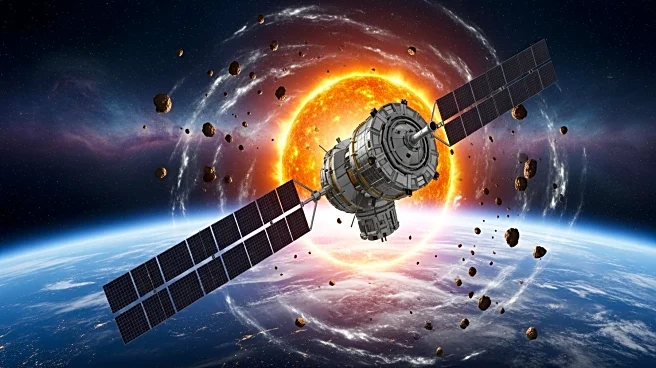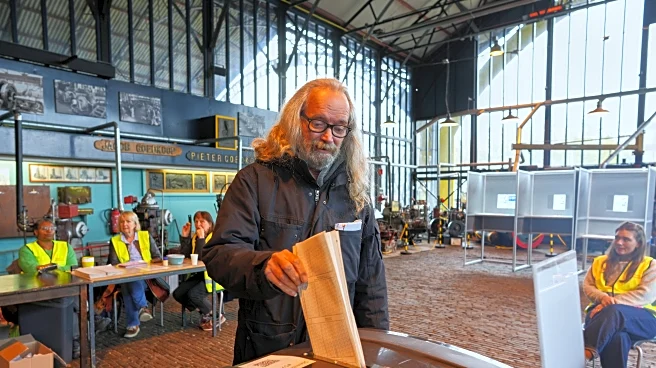What's Happening?
Recent simulations conducted by the European Space Agency (ESA) have revealed the potential catastrophic impact of a solar storm similar to the 1859 Carrington Event on Earth's satellites. The simulations suggest that such a storm could wipe out all satellites orbiting
the planet, posing a significant threat to global technology infrastructure. The Carrington Event was the most powerful solar flare recorded, causing widespread geomagnetic disturbances and auroras. ESA's tabletop exercise, conducted at the European Space Operations Center in Germany, aimed to prepare for the launch of the Sentinel-1D satellite. The hypothetical scenario involved an X45 magnitude solar flare, followed by a coronal mass ejection (CME) traveling at over 4.4 million mph, which could severely damage satellites and disrupt navigation systems.
Why It's Important?
The implications of a Carrington-level solar storm are profound, given the modern world's reliance on satellite technology for communication, navigation, and data transmission. A storm of this magnitude could lead to significant economic losses, as evidenced by the 2024 geomagnetic storm that disrupted GPS systems and cost U.S. farmers $500 million. The potential damage to North American power grids could reach up to $2.6 trillion, highlighting the vulnerability of infrastructure to space weather events. The global cost of such a storm is considered beyond comprehension, emphasizing the need for preparedness and mitigation strategies to protect technological assets and maintain societal functions.
What's Next?
Experts stress the inevitability of another Carrington-like storm, with a 12% chance of occurrence this century. The ESA's simulations underscore the importance of developing response plans and training for worst-case scenarios. Continuous exercises aim to improve readiness and resilience against extreme space weather events. The focus is on enhancing satellite protection and ensuring rapid response capabilities to minimize disruption and damage. As the launch of Sentinel-1D approaches, the ESA continues to refine strategies to safeguard satellites and infrastructure from potential solar threats.
Beyond the Headlines
The ethical and strategic dimensions of preparing for solar superstorms involve balancing investment in protective measures against the likelihood of occurrence. The challenge lies in prioritizing resources for an event with uncertain timing but potentially devastating consequences. Long-term shifts in satellite design and deployment may be necessary to enhance resilience against space weather, influencing technological innovation and policy development in the aerospace sector.















